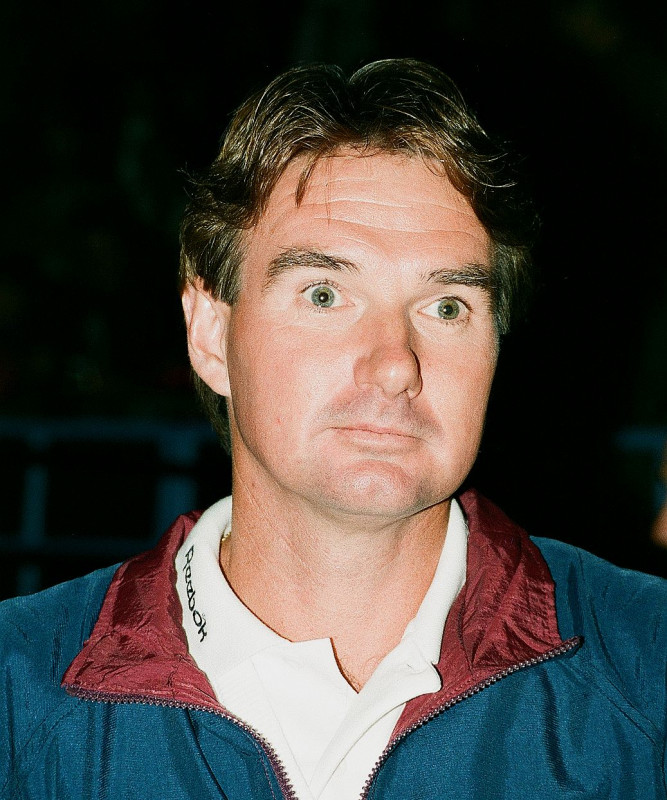How Jimmy Connors built a successful career. Explore key moments that defined the journey.
Jimmy Connors, an American former professional tennis player, achieved the world No. 1 ranking by the ATP for 268 weeks, finishing as the year-end No. 1 five times. Connors holds Open Era men's singles records for titles (109), matches played (1,557), and match wins (1,274). His accomplishments include eight major singles titles and three year-end championships. In 1974, he won three major titles but was barred from competing in the French Open. Connors retired from professional tennis in 1996.
1953: Lacoste's Stringing Method Patented
In 1953, Lacoste devised and patented a method for stringing tennis rackets, which was used in the Wilson T2000 steel racket played with by Jimmy Connors.
1961: First U.S. Championship
In 1961, at the age of nine, Jimmy Connors played in his first U.S. Championship, the U.S. boys' 11-and-under tournament.
1968: Coaching by Pancho Segura
In 1968, at age 16, Jimmy Connors's mother took him to Southern California to be coached by Pancho Segura, while she continued to act as his coach and manager.
August 1970: First Match Win
In August 1970, Jimmy Connors recorded his first match win in the first round of the Haverford tournament, defeating Jean-Baptiste Chanfreau.
1971: NCAA Singles Title
In 1971, Jimmy Connors won the NCAA singles title as a freshman while attending UCLA and attained All-American status. He also reached his first ATP Tour finals at Columbus and Los Angeles.
1972: Turning Professional
In 1972, Jimmy Connors turned professional and won his first tournament, the Jacksonville Open, followed by victories at Roanoke, Queen's Club, Columbus, Cincinnati and Albany. He also refused to join the ATP, opting to play in tournaments organized by his manager, Bill Riordan.
December 1973: Start of Australian Open
The Australian Open began in late December 1973; Jimmy Connors went on to win the tournament on January 1, 1974.
1973: US Open Quarterfinal vs Newcombe
In 1973, Jimmy Connors played Newcombe in the US Open quarterfinal, which Newcombe won on grass.
1973: Wimbledon Doubles Championship
In 1973, Jimmy Connors teamed up with Ilie Nastase to win the doubles championships at Wimbledon.
1973: U.S. Pro Singles Win
In 1973, Jimmy Connors won the U.S. Pro Singles, defeating Arthur Ashe in a five-set final. He won a total of 11 tournaments that year.
January 1, 1974: Australian Open Win
On January 1, 1974, Jimmy Connors won the Australian Open, which had begun in late December 1973, defeating Phil Dent in four sets.
July 29, 1974: Reached World No. 1 Ranking
On July 29, 1974, Jimmy Connors reached the ATP world No. 1 ranking and held it for 160 consecutive weeks.
1974: Matches against Borg
In 1974, Jimmy Connors and Bjorn Borg started their rivalry with 12 matches on tour during 1974-1978. Borg won only four of those meetings, but two of those wins were in the Wimbledon finals of 1977 and 1978.
1974: Connors and Evert Triumphed at Wimbledon
In 1974, Jimmy Connors and Chris Evert each triumphed in the singles events at the Wimbledon Championships, a feat labelled "The Lovebird Double" by the media.
1974: Dominant Year for Connors
In 1974, Jimmy Connors had a dominant year with a 93–4 record, winning 15 of the 21 tournaments he entered, including the Australian Open, Wimbledon, and the US Open. He was not permitted to participate in the French Open in 1974. He became the second man in the Open Era to win three major titles in a calendar year.
1974: US Open on grass
In 1974, Jimmy Connors reached the final of the US Open, winning on grass.
1975: Australian Open Final vs Newcombe
In 1975, Jimmy Connors played Newcombe in the Australian Open final, which Newcombe won on grass.
1975: Grand Slam Finals Appearances
In 1975, Jimmy Connors reached the finals of Wimbledon (losing to Arthur Ashe), the US Open (losing to Manuel Orantes), and Australia (losing to John Newcombe), but he did not win any of them. He won nine tournaments overall and retained the ATP No. 1 ranking.
1975: US Open Doubles Championship
In 1975, Jimmy Connors teamed up with Ilie Nastase to win the US Open doubles championships.
1975: US Open Final Loss to Orantes
In 1975, Jimmy Connors was upset by Orantes in the final of the US Open.
1975: "Challenge Matches" wins
In 1975, Jimmy Connors won two highly touted "Challenge Matches" arranged by Riordan and televised by CBS Sports from Caesars Palace in Las Vegas, Nevada. He won against Laver in February and Newcombe in April.
1975: Wimbledon Final Strategy Against Connors
In the 1975 Wimbledon final, Arthur Ashe countered Jimmy Connors' strategy of hitting the ball on the rise by taking the pace off the ball, giving Connors only soft junk shots (dinks, drop shots, and lobs) to hit.
1976: Connors Wins US Open against Borg
In 1976, Connors defeated Borg in the US Open Finals.
1976: WCT Aetna World Cup Win
In 1976, Jimmy Connors defeated Newcombe in the WCT Aetna World Cup on indoor carpet.
1976: US Open on Clay
In 1976, Jimmy Connors reached the final of the US Open, winning on clay.
1977: Borg wins Wimbledon against Connors
In 1977, Borg defeated Connors in the Wimbledon finals.
1977: Masters and WCT Finals Victories
In 1977, Jimmy Connors lost in the Wimbledon and US Open finals but won both the Masters and the WCT Finals. He held onto the ATP No. 1 ranking and won eight tournaments this year.
1977: US Open Final Loss to Vilas
In 1977, Jimmy Connors lost to Vilas in the final of the US Open.
1977: Brief Loss of No. 1 Ranking
In 1977, Jimmy Connors relinquished his initial grip (160 weeks) on the No. 1 ranking for only one week, from August 23 to 30, before resuming as No. 1 for another 84 weeks.
1977: Booed at Wimbledon
In 1977, Jimmy Connors was booed at Wimbledon for snubbing the Parade of Champions on the first day of the Centenary, a rare show of disapproval at the event.
1977: Masters Championship Victory
In 1977, after moving to New York City, Jimmy Connors entered the Masters championship, losing to Vilas but winning the title by defeating Bjorn Borg in the final.
1978: Year-End No. 1
From 1974 through 1978, Jimmy Connors was the year-end No. 1 player.
1978: Borg wins Wimbledon against Connors
In 1978, Borg defeated Connors in the Wimbledon finals.
1978: WCT Aetna World Cup and Sydney Indoor Quarterfinal Wins
In 1978, Jimmy Connors defeated Newcombe in the WCT Aetna World Cup on indoor carpet and in the Sydney Indoor quarterfinal on hard courts.
1978: US Open Win and Wimbledon Final Loss
In 1978, Jimmy Connors lost to Borg in the Wimbledon final but defeated Borg in the US Open final. He reached the US Open final in five straight years from 1974 through 1978. Connors won ten tournaments in 1978, including the U.S. Pro Indoor, and retained the ATP No. 1 ranking at the end of the year.
1978: Grand Slam Win on Hard
In 1978, Jimmy Connors won a Grand Slam singles title on hard court.
1979: Grand Slam Semifinal Appearances
From 1979, Jimmy Connors lost in the semifinals of the three top Grand Slam events. He also reached the semifinals at the Masters in 1979 and won eight tournaments overall that year.
1979: Hong Kong Round of 16 Win
In 1979, Jimmy Connors defeated Newcombe in the Hong Kong round of 16 on hard courts.
1979: Losing Top Ranking to Borg
In early 1979, Jimmy Connors lost his top ranking to Bjorn Borg. Their overall tour record ended with Connors at 8 wins and 15 losses against Borg.
1980: WCT Finals Victory
In 1980, Jimmy Connors defeated the defending champion, John McEnroe, in the WCT Finals.
1981: French Open Quarterfinals
From 1979 to 1981, Jimmy Connors lost in the semifinals of the three top Grand Slam events every time except the 1981 French Open, where he lost in the quarterfinals. He won four tournaments in 1981.
1982: US Open Victory Against Lendl
In 1982, Jimmy Connors defeated Ivan Lendl in the US Open final and regained the No. 1 ranking.
1982: Wimbledon and US Open Victories
In 1982, Jimmy Connors experienced a resurgence, winning Wimbledon against John McEnroe and the US Open against Ivan Lendl. He reclaimed the ATP No. 1 ranking and was named Player of the Year by the ATP and ITF World Champion. Connors also reached the semifinal of the Masters Cup and won five other tournaments for a total of seven.
1982: Wimbledon Singles Title
In 1982, at age 29, Jimmy Connors won his second Wimbledon singles title, defeating John McEnroe in a five-set match.
October 1983: Connors Switched to Graphite Racket
In October 1983, at the Tokyo Indoor tournament, Jimmy Connors switched to a new mid-size graphite racket, the Wilson ProStaff, designed specifically for him.
1983: US Open Win Against Lendl
In 1983, Jimmy Connors defeated Ivan Lendl in the US Open final.
1983: Fifth US Open Title
In 1983, Jimmy Connors won the US Open for a record fifth time, defeating Ivan Lendl in the final. It was his 100th tournament victory and fourth of the year. He finished the year ranked No. 3.
October 1984: Previous Victory in Tokyo Indoors
Since his previous victory in the Tokyo Indoors against Lendl in October 1984, Jimmy Connors had played in 56 tournaments and lost 11 finals.
1984: Connors Still Using Steel Racket
By 1984, most tennis professionals had switched to newer racket technologies, materials, and designs, but Jimmy Connors was still using the "Wilson T2000" steel racket.
1984: Losing Streak Against Lendl Begins
From 1984, Ivan Lendl began a winning streak against Jimmy Connors, winning their last 17 matches through 1992.
1984: Wimbledon and WCT finals
In 1984, Jimmy Connors had made both the finals of Wimbledon and the WCT finals with semifinal appearances at the French Open, the US Open, and the Masters Cup. He won five tournaments and finished the year as the No. 2 ranked player after McEnroe.
1984: Wimbledon Loss Against McEnroe
In 1984, Jimmy Connors lost to John McEnroe in Wimbledon final.
1984: Connors Used Wilson ProStaff on Tour
In 1984, Jimmy Connors used the Wilson ProStaff racket that was designed for him on the tour.
1985: Grand Slam Semifinals
In 1985, Jimmy Connors made the semifinals of the three majors he entered and finished No. 4 for the year.
1985: Connors Plays with T2000
In 1985, Jimmy Connors was found playing with the "Wilson T2000" steel racket again.
1987: Connors Signed Contract with Slazenger
In 1987, Jimmy Connors finally switched to a graphite racket when he signed a contract with Slazenger to play with their Panther Pro Ceramic racket.
1987: Finished the year as No. 4
In 1987, at the age of 35, Jimmy Connors finished the year ranked No. 4.
1987: Wimbledon Comeback
In the fourth round of the 1987 Wimbledon Championships, Jimmy Connors defeated Mikael Pernfors in five sets, staging a comeback from two sets down.
1988: Connors Auditioned for Wheel of Fortune
In 1988, Jimmy Connors auditioned to host the NBC daytime version of "Wheel of Fortune", but the job went to Rolf Benirschke.
1989: Final Tournament Wins and US Open Run
In 1989, Jimmy Connors won the final tournaments of his career at Toulouse and Tel Aviv. At the 1989 US Open, Connors defeated Stefan Edberg in the fourth round and pushed Andre Agassi to five sets in the quarterfinals, ending the year ranked 14th in the world.
1989: Michael Chang's French Open
Michael Chang was the champion of the French Open in 1989, setting the stage for Jimmy Connors' match against him in 1991.
1990: Commentary with NBC-TV
In 1990, Jimmy Connors began doing commentary with NBC-TV during its coverage of the French Open and Wimbledon tournaments.
1990: Connors Signed with Estusa
In 1990, Jimmy Connors signed a contract with Estusa to play with their tennis rackets.
1990: Career Setback
In 1990, Jimmy Connors's career seemed to be at an end as he played only three tournament matches and lost all three, dropping to No. 936 in the world rankings.
1991: Connors Continued Commentary with NBC-TV
In 1991, Jimmy Connors continued his commentary work with NBC-TV during its coverage of the French Open and Wimbledon tournaments.
1991: US Open Semifinals Run
In 1991, Jimmy Connors made an improbable run to the US Open semifinals, overcoming deficits in multiple matches, including a first-round match where he was down two sets and 3-0. He defeated Patrick McEnroe, Michiel Schapers, Karel Novacek, Aaron Krickstein on his 39th birthday, and Paul Haarhuis before losing to Jim Courier in the semifinals.
1991: Comeback and French Open Retirement
In 1991, after surgery on his wrist, Jimmy Connors came back to play 14 tournaments. However, an ailing back forced him to retire from a five-sets match in the third round of the French Open against Michael Chang.
September 1992: Battle of the Sexes Victory
In September 1992, Jimmy Connors played Martina Navratilova in the third Battle of the Sexes tennis match at Caesars Palace in Las Vegas, Nevada. Connors, with service restrictions, won 7–5, 6–2, earning an estimated $1 million.
1992: Matches and Controversy in 1992
In 1992, Jimmy Connors beat Michael Stich in Memphis, leading to Stich accusing Connors of unfair on-court behavior. Connors reached the semifinals at Memphis, losing to Mal Washington. He made it to the quarterfinals at Indianapolis before losing to Boris Becker. At the 1992 US Open, Connors defeated Jaime Oncins in the first round on his 40th birthday, but lost to Ivan Lendl in the second round.
1992: Winning streak against Connors
Through 1992, Ivan Lendl won their last 17 matches through after Connors's prime.
February 1993: San Francisco Tournament Semifinal Run
In February 1993, Jimmy Connors reached the semifinals of the San Francisco tournament, defeating Richard Matuszewski, Bryan Shelton, and Chuck Adams. He retired against Brad Gilbert due to bone spurs in his right foot.
June 1995: Quarterfinal Appearance at Halle Event
In June 1995, Jimmy Connors beat Sébastien Lareau and Martin Sinner to reach the quarterfinals of the Halle event in Germany. He lost this quarterfinal to Marc Rosset.
April 1996: Last ATP Tour Match
In April 1996, Jimmy Connors played his last match on the ATP Tour, losing in three sets to Richey Reneberg in Atlanta.
1996: Retirement
In 1996, Jimmy Connors retired from professional tennis.
2005: Connors Commentated for the BBC at Wimbledon
During the Wimbledon tournaments of 2005, Jimmy Connors commentated for the BBC alongside John McEnroe, among others.
July 24, 2006: Roddick Announced Partnership with Connors as Coach
On July 24, 2006, American tennis player Andy Roddick announced his partnership with Jimmy Connors as his coach at the start of the Countrywide Classic tournament in Los Angeles.
2006: Connors Commentated for the BBC at Wimbledon
During the Wimbledon tournaments of 2006, Jimmy Connors commentated for the BBC alongside John McEnroe, among others.
2007: Connors Commentated for the BBC at Wimbledon
During the Wimbledon tournaments of 2007, Jimmy Connors commentated for the BBC alongside John McEnroe, among others.
March 6, 2008: Roddick Ended Relationship with Connors
On March 6, 2008, Andy Roddick announced the end of his 19-month coaching relationship with Jimmy Connors.
2009: Connors Served as Commentator for Tennis Channel
Since the US Open tournament of 2009, Jimmy Connors has served as a commentator and analyst for the Tennis Channel.
July 2013: Sharapova Announced Connors as New Coach
In July 2013, Maria Sharapova announced on her website that Jimmy Connors was her new coach.
August 15, 2013: Sharapova Ended Partnership with Connors
On August 15, 2013, Maria Sharapova confirmed that she had ended her partnership with Jimmy Connors after just one match together.
2013: Connors Published Autobiography
In 2013, Jimmy Connors published his autobiography, "The Outsider", which later won the British Sports Book Awards in the "Best Autobiography/Biography" category.
2014: Connors Returned to BBC Commentary at Wimbledon
In 2014, Jimmy Connors returned to BBC commentary at Wimbledon.
July 24, 2018: Connors Joined LiveWire Ergogenics
On July 24, 2018, LiveWire Ergogenics, Inc. announced that Jimmy Connors joined the firm as a spokesman and advisor. The company focuses on real estate, and the licensing and management of production facilities for cannabis-based products.
December 2019: Connors Appeared on Family Guy
In December 2019, Jimmy Connors appeared as himself on season 18 episode 9 of "Family Guy" titled "Christmas Is Coming".
Mentioned in this timeline
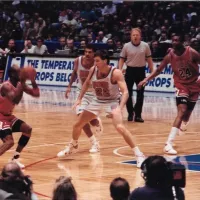
Basketball is a team sport played on a rectangular court...
CBS Broadcasting Inc CBS is a prominent American commercial broadcast...
California is a U S state on the Pacific Coast...
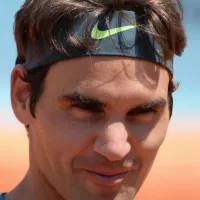
Roger Federer is a retired Swiss professional tennis player widely...

Maria Sharapova is a retired Russian professional tennis player She...

Christmas is an annual festival celebrated on December th commemorating...
Trending

1 month ago Nina Dobrev enjoys Mexican getaway with friends after Shaun White split, finding beach vibes.

2 months ago Kendall Jenner Celebrates Her 30th Birthday with Nude Beach Photos and Bikini Looks
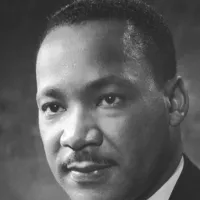
Martin Luther King Jr was a pivotal leader in the American civil rights movement from until his assassination in As...
5 months ago American hiker Cole Henderson found dead in Spanish Pyrenees after going missing.

7 months ago Rebel Wilson: Emergency Plastic Surgery After On-Set Accident During 'Bride Hard' Filming

1 month ago Analyst Predicts Apple Deal, Intel Stock Rises, but Impact Questioned.
Popular

XXXTentacion born Jahseh Dwayne Ricardo Onfroy was a controversial yet...

Stranger Things created by the Duffer Brothers is a popular...

Kelsey Grammer is an accomplished American actor producer and singer...
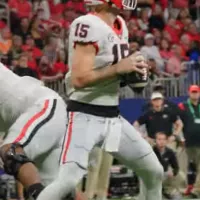
Carson Beck is an American college football quarterback currently playing...

Marco Rubio is an American politician attorney and diplomat He...

Candace Owens is an American conservative political commentator and author...
